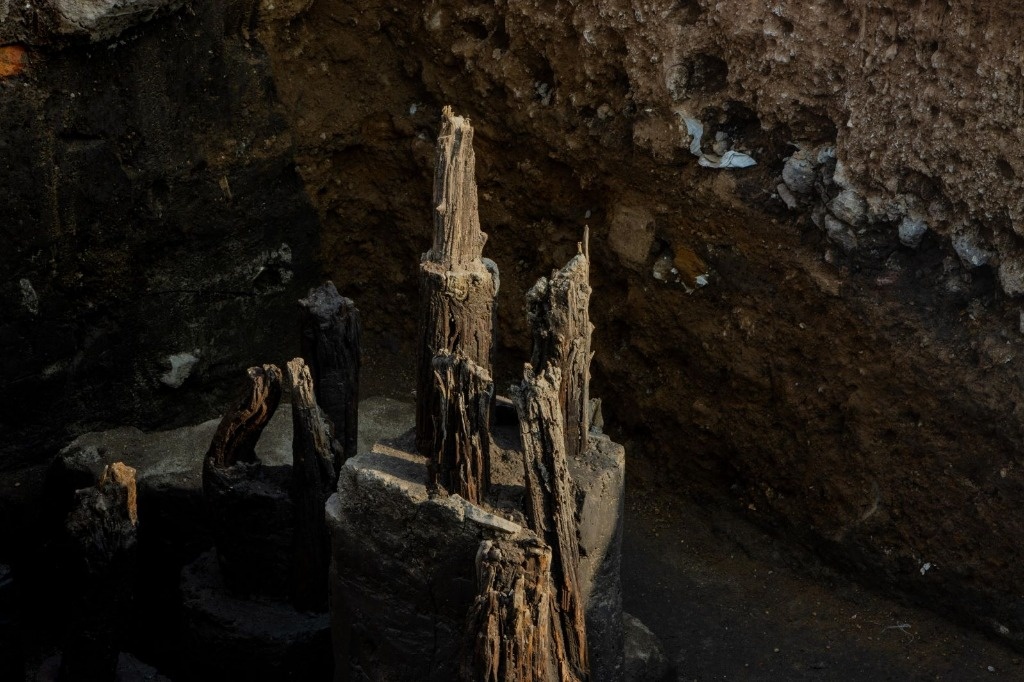Mexico City. When supervising the works for an overpass of one of the main arteries of Mexico City, Chapultepec Avenue, a team from the National Institute of Anthropology and History (INAH) discovered vestiges of a pier and a canal from pre-Hispanic times, on what was the beach of a peninsula located at the foot of Cerro del Chapulín.
In the statement issued by the INAH, it is reported that the group of specialists, headed by María de Lourdes López Camacho, responsible for the Bosque, Cerro y Castillo de Chapultepec Archaeological Project, dedicated to the study and analysis of the archaeological remains of the area, identified several sections of the artificial channel, as well as a small port, where canoes must have arrived and left for Lake Texcoco.
The researcher considers this discovery a fortune in an area that has been heavily intervened since the end of the 19th century, when the Indian town of San Miguel Chapultepec disappeared, where last year vestiges of a pre-Hispanic settlement were located, adjacent to the whereabouts of the station. Chapultepec of the Metro Collective Transportation System, next to the building that the Ministry of Health occupied.
He added that the settlement, from the Late Postclassic period (1200-1521 AD), located in 2023, is in a straight line with respect to the canal. “There was a path through which the inhabitants accessed this main road; Many times, the ‘water roads’ ran parallel to the land roads.”
Through the canal, referred to on the Uppsala Map (ca.1550), where it appears with a canoe in transit, originally “a river ran through the south side of the hill and flowed into a reservoir. This stream was culturally transformed: first, into a navigable canal; at the beginning of the viceroyalty, in a pipe and, in the middle of the 18th century, in the Chapultepec aqueduct, which had 904 arches, and which went from the ‘Chapultepec pools’ to the Salto del Agua fountain,” López explained. Camacho.
For her part, the head of the excavation, Liliana Márquez Escoto, added that in the center of the exploration a concentration of botanical remains, typical of lake deposits, such as seeds, wood, gastropods and rootlets, were observed.
Likewise, the restorer of the archaeological rescue project, Norma García Huerta, recovers the shapes and reintegrates the colors of the ceramic collection obtained, of which pieces of ritual type pieces stand out and that could have been offered to this body of water in the Postclassic period. Late. Semi-complete and complete objects from the Early Colonial period (1521-1620 AD) as well as materials from the 20th century have also been located.
These findings, as well as the materials that are intervened in the Restoration Department, show the constant occupation of this space.
#Remains #preHispanic #pier #discovered #Chapultepec
–


